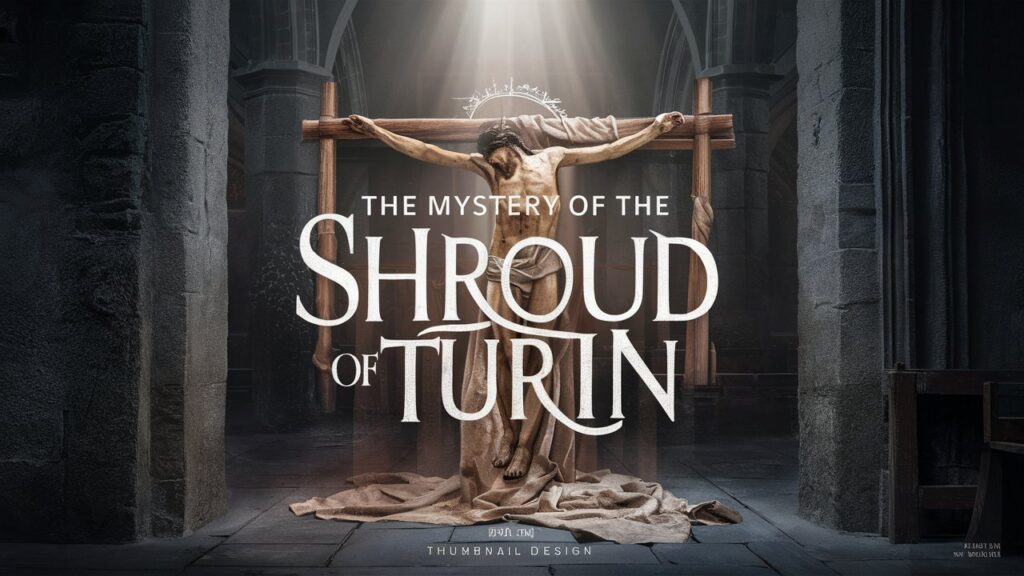The Mystery of the Shroud of Turin: Unraveling the Enigma

The Shroud of Turin has been one of the most fascinating and debated religious relics in history. For centuries, people have been captivated by its appearance, believing it to be the burial cloth of Jesus Christ. Its origins, the process behind the creation of the image, and whether it is truly the authentic shroud of Christ remain questions that intrigue researchers and believers alike. In this article, we delve deep into the mystery of the Shroud of Turin, exploring its history, the scientific studies conducted, and the ongoing debate surrounding its authenticity.
The History of the Shroud of Turin
The Shroud of Turin is a linen cloth, measuring approximately 14 feet by 3.5 feet, which bears the faint image of a man who appears to have suffered crucifixion. Its history is clouded in mystery, with no definitive record of how it came to be in Turin, Italy. The first documented mention of the shroud dates back to the 14th century, but it is believed by many to have been in existence long before then.
Some theories suggest that the shroud was created in the Middle Ages, possibly as a religious artifact intended to imitate the burial cloth of Jesus. However, others believe it could be much older, possibly dating back to the time of Christ. Its presence in historical records, such as its appearance in the 1357 Chambery fire, provides clues about its past but does not confirm its authenticity.
The Image on the Shroud: A Unique Phenomenon
One of the most remarkable aspects of the Shroud of Turin is the image of a man that is imprinted on the fabric. The image, which appears to show a figure that has been crucified, is faint and intricate, with remarkable details such as wounds on the hands, feet, and side, as well as a crown of thorns.
What makes this image so unique is the way it was created. The Shroud of Turin exhibits no evidence of paint, pigments, or dyes being used in the creation of the image. Instead, the image seems to be a result of some sort of unknown energy or reaction that affected the fibers of the linen cloth. The lack of a clear method for how the image was formed has led to numerous theories ranging from natural processes to supernatural explanations.
Carbon Dating and the Controversy
In 1988, a group of scientists conducted carbon dating tests on the Shroud of Turin, determining that the cloth dated back to between 1260 and 1390 AD. This result sparked controversy, as it appeared to confirm that the shroud was created during the medieval period, rather than being the burial cloth of Jesus Christ. However, critics of the carbon dating results argue that the sample taken for testing might have been contaminated or come from a section of the shroud that was altered or repaired over time.
Additionally, some researchers believe that the carbon dating method may not have been accurate due to the unique nature of the shroud’s fibers and the possibility of environmental factors affecting the testing process. These discrepancies have fueled ongoing debates and led many to question the true age of the Shroud of Turin.
Scientific Studies and Theories
Over the years, various scientific studies have been conducted on the Shroud of Turin in an attempt to uncover its mysteries. Among the most significant studies were those that analyzed the bloodstains on the shroud. Researchers have determined that the stains are real human blood, which adds a layer of authenticity to the idea that the shroud could have been used during Jesus’ crucifixion.
Other studies have examined the image itself, trying to understand how it was created. Some experts suggest that the image could have been formed through a process known as oxidation, where the linen fibers reacted to some sort of energy or radiation. However, no concrete explanation has been found, and the exact method of image formation remains one of the Shroud’s greatest mysteries.
Religious Significance and Pilgrimages
For many, the Shroud of Turin is more than just a relic; it is a symbol of faith. Thousands of people visit the Turin Cathedral each year to view the shroud, even though it is rarely put on public display. The shroud’s connection to the passion of Christ—specifically his death and resurrection—has made it a powerful object of veneration for many Christians around the world.
The religious significance of the shroud is undeniable, as it serves as a tangible link to the events described in the New Testament. For those who believe in its authenticity, the shroud represents an irreplaceable connection to the life of Jesus Christ, making it an invaluable artifact in both religious and historical contexts.
The Ongoing Mystery
The debate over the Shroud of Turin’s authenticity is far from over. While scientific evidence has yet to provide a clear answer, the mystery of the shroud continues to inspire wonder and debate. Is it truly the burial cloth of Christ, or is it a medieval forgery? The truth may never be fully known, but the Shroud of Turin remains one of the most captivating and enduring mysteries in both religious and scientific circles.
Conclusion: The Shroud’s Enduring Legacy
The Shroud of Turin is more than just an ancient cloth; it is a symbol of mystery, faith, and history. Its origins, the creation of its image, and its true significance will likely continue to be topics of debate for many years to come. Whether you view it as an authentic relic or a fascinating historical artifact, there is no denying that the Shroud of Turin holds a special place in the hearts and minds of people around the world. Its enduring legacy is one of intrigue, faith, and unanswered questions that may never be fully explained.



Post Comment